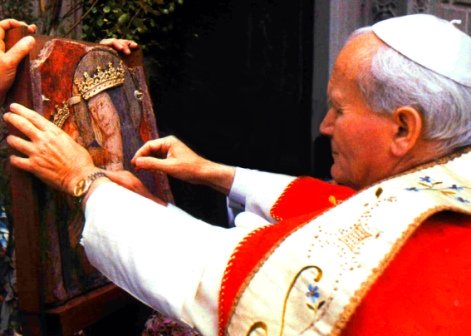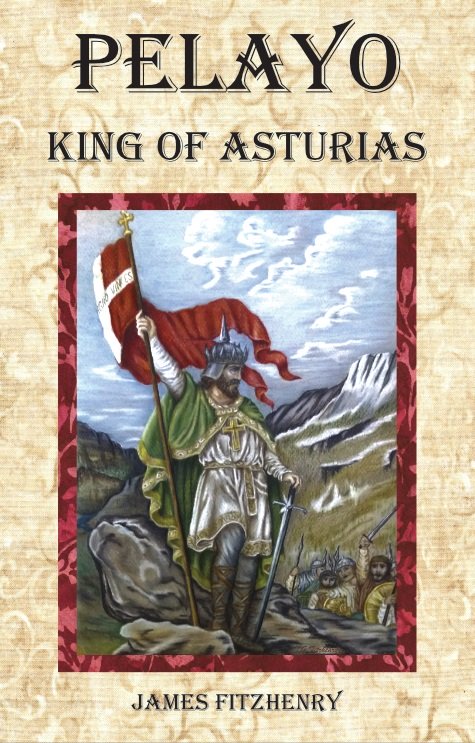Our Lady of the Vine

March 10: Our Lady of the Vine, Tuscany, Italy
The Abbot Orsini wrote: “Our Lady of the Vine, Tuscany, Italy. A fine church, located near Viterbo, occupied at present by Dominicans.”
The city of Viterbo is located at the foot of Mount Cimino in the province of Rome. Viterbo itself currently has 34 separate parishes, with 8 religious houses for men and 18 houses for sisters. I can find no reference to Our Lady of the Vine, or Madonna della Vito, anywhere in the entire region of Tuscany.
I found two references to Dominican convents. The first was Our Lady of the Oak, or Madonna della Quercia, which also has a Dominican convent attached. The second was Santa Maria dei Gradi, of which only the church still remains. It was one of the earliest Dominican convents, although it is now used mainly as a retreat house.
The Heavenly Mother, like all mothers, does not discriminate between children, for her help is for everyone. We now continue with Our Lady of the Oak, which is almost surely the place referred to be the good abbot as Our Lady of the Vine.
Our Lady of the Vine
At one time in Viterbo there was a certain man named Mastro Baptist Magnano Iuzzante, who was a very God-fearing devotee of the glorious Virgin Mary. He hired a painter named Monetto in the year 1417 to paint an image on a tile of the most glorious Virgin Mary holding her Son in her arms. Mastro Baptist then lovingly laid the tile on an oak tree that stood at the edge of his vineyard, near the road leading to Bagnaia and along which robbers often awaited to attack unwary travelers.
The image remained there for
about 50 years under cover of the oak’s branches, and after a while only a few
women who passed by ever stopped to say a prayer and to admire the beauty of a
natural tabernacle that a wild vine, which had embraced the oak, had created.
During
this period a hermit of Siena, Pier Domenico Alberti, whose hermitage was at
the foot of Palanzana, went around the countryside and the nearby towns of
Viterbo, saying, "Among Bagnaia and Viterbo there is a treasure."
Many
people, driven by greed, started digging there but found nothing and asked for
an explanation from the hermit. Domenico then brought them under the oak tree
chosen by the Virgin and pointed to the real treasure, the Madonna. He
told them of the day he had decided to take away the sacred image to his
hermitage, and of how it had returned to the oak.
Dominico
was not alone in this experience. A devout woman named Bartolomea often walked
past the oak tree and stopped each time to pray to the Blessed Virgin. One day she
also decided to take the tile to her home. After
saying her evening prayers, Bartolomea went to bed, but woke up in the morning to
find the image missing. She at first thought that her family had taken it to place
it somewhere else, but upon learning that this was not so, she ran to the oak
tree and saw what he had already guessed: the tile had miraculously returned to
its place amid the tendrils of the vine.
Bartolomea
tried again, but always the sacred image returned to the tree. At
first she did not say anything to anyone to avoid being taken for being mad.
Then,
in 1467, during the month of August, the whole region was struck by the
greatest scourge of those times: the plague. Everywhere there were the bodies
of the dead lying in the deserted streets, and there was everywhere great weeping
and mourning. Some
then remembered the image painted on the humble tile, and, as if driven by an inexplicable
force, went to kneel beneath the oak. Nicholas of Tuccia, an historian, said
that on one day 30,000 people were there to beg for mercy.
A
few days later the plague ceased, and then 40,000 of the faithful came back to
thank the Virgin Mary. The people of Viterbo were headed by their bishop Pietro
Gennari, and there were many from other regions.
In early September of the same
year another extraordinary event happened.
A
good knight of Viterbo had many enemies, as will often happen to a follower of
Christ. One day he was surprised by his enemies outside the walls of Viterbo.
Alone and unarmed, and having no way to deal with the mortal danger, he fled
into the nearby woods. Fatigued
and desperate to reach his destination, the knight heard the cries of the enemy
draw nearer and nearer. Eventually
he arrived at the oak with the sacred image of Mary, where he fell at her feet
with great faith and embraced the trunk of the tree, putting his life into the
hands of his Heavenly Mother.
The
knight’s enemies reached the oak, but were surprised that they could no longer
see the knight. They began to look behind every tree and bush, but not one
could see him since he had disappeared before their very eyes. Failing to
find him after a long time spent in searching, they gave up in disgust.
Then
the knight, after thanking the Virgin Mary, returned to Viterbo and told
everyone what had happened. Bartolomea heard his tale, and encouraged by his
words, she described the miracles to which she had been a witness. They told
everyone what had happened to them with so much enthusiasm, faith that devotion
that the stories spread like wildfire, and many people, coming from the most
diverse regions of Italy, flocked to the feet of the oak to implore help from the
Blessed Virgin.
It
was decided to build an altar, and then a chapel of planks before Pope Paul II gave
the necessary permission to build a small church in 1467. Many popes and saints
have been devotees of the image, including St Charles Borromeo, St Paul of the
Cross, St Ignatius Loyola, Saint Crispin of Viterbo, and St Maximilian Kolbe, among many others.
On
January 20th, 1944, during the bombing of Viterbo, a squadron of 12
bombers headed for the oak, but upon arriving at their destination,
inexplicably veered to the right and the bombs dropped did not destroying
anything outside of the asylum which was empty. The remains of the
bombs, 3 large chunks, are kept behind the altar of the Madonna.
In
1986, Pope John Paul II proclaimed Our Lady of the Oak Patroness of the new
diocese of Viterbo, formed from the union of those of Viterbo, Tuscania,
Montefiascone, Acquapendente and Bagnoregio.
Even
today the Virgin protects her devotees, and the devotion to the Blessed Virgin
of the Oak is very strong.
Every year on the second Sunday of September, the faithful commemorate the
"Benefits from the Sacred Image of Our Lady of the Oak." Many cities
and towns, with their brotherhoods, participate in the procession of
thanksgiving, called the "Covenant of Love "
The mayor of Viterbo, on behalf of all participants, renews the consecration made
of old by the whole region back in 1467.
Our Lady of the Vine
James Fitzhenry, roman-catholic-saints.com, Marian Calendar
Have A Great Story About This Topic?
Do you have a great story? Have You Visited This Shrine? Share it!
Return to Marian Calendar March
Return to Roman Catholic Saints Home Page from Our Lady of the Vine
Now Available!!
Pelayo's resistance initiated the nearly 800-year-long Reconquista to take back his country from the ruthless invader who had conquered his homeland and sought to erase his culture and his faith. His actions would lay the foundations of a Kingdom for Christ that would eventually reach around the world and spread the Catholic faith to millions of souls. Read more...
Please help us continue to bring high quality books to our readers at the lowest possible price! Click the link below! Thank you!
Now Available!
Catholic Vitality Publications presents . . .Brand new by
James Fitzhenry
Now in paperback!
Battles - Honor - Miracles! This
book is filled with amazing stories of little-known Catholic heroes presenting
spectacles of bravery and valor never exceeded in all the annals of history. read more. . .
Now Available for $24.95
Also available:
Catholic Vitality Publications
Roman Catholic books currently published by Catholic Vitality Publications:
El Cid, God's Own Champion
-the amazing true story of the life of Rodrigo Diaz, El Cid!
Available for only $22.95
St. Fernando III
A Kingdom for Christ
- King St. Fernando III, born 100
years to the month after the death of
the Cid. His life was filled with miracles
and many conquests!
Available now for $26.95
Discounts available for bulk
orders and for bookstore
retail sales! Just contact us




